The story of all modern Chevy small-blocks began with the 327, which produced 375 hp, a record that stood until 2001. We explore the short, bright life of the original Chevy small-block.
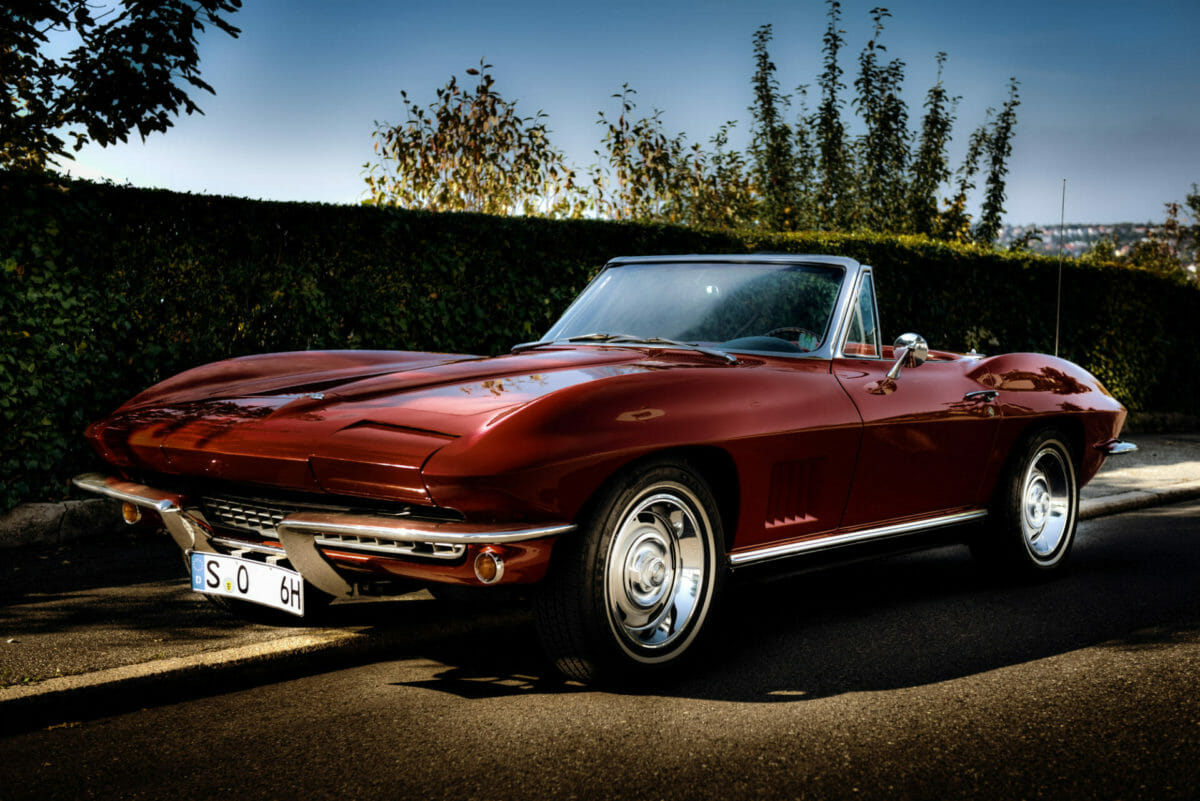
This high-revving Chevrolet 327 V8 engine represented the pinnacle of Chevy performance for nearly a decade. The 327, available in some 1960s Corvettes — and sold to other companies like Checker Taxi and Italy’s ISO Rivolta — produced 375 horsepower, a record that stood until 2001.
Chevrolet developed the 327 ci (5.4L) V8 in 1962. By 1969, the Chevy 327 had appeared in nearly every vehicle in the Bowtie lineup for an eight-year period — from the Nova to the C10. It was even pressed into service as a track-ready, fuel-injected Corvette power plant.
The performance-oriented Small Block Chevy (SBC) engine pioneered a four-inch bore (cylinder diameter) and a 3.25-inch stroke (piston travel). Throughout the 1960s, the 327 evolved.
Eventually, the engine’s stroke was lengthened, its displacement increased, and it morphed into Chevrolet’s 350 ci (5.7L) V8, one of the most popular hot-rod engines of all time.
Chevy’s 4-inch bore engine family eventually transcended the performance segment, leading to some of the most successful all-purpose engines in history. The story of all modern Chevy small-blocks began with the 327.
Is a Chevy 327 a Good Motor?
Hagerty calls the 327 a “power-packed small-block,” and the Original Parts Group dubs the power plant “potent.” The folks at the popular auto blog On All Cylinders include the 327 in the No. 3 slot on its list of the “Top 5 Small Block Chevy Engines of All Time.”
These are impressive accolades, of course. But to really find out if an engine is worth its salt, it’s always a good idea to check out what true auto enthusiasts, gearheads, and mechanics think, because they’re the ones who are actually utilizing these legendary engines.
Over at the Jalopy Journal, the 327 was the topic of discussion for one experienced shadetree mechanic who was considering purchasing a 327 engine.
“I have a chance to buy a running [Chevy 327] for cheap but I’m not familiar with this engine, is it reliable?” asks one of the enthusiast site’s Canadian members. “I wanna use it for my model A… Should I simply run a 350, or [will the] 327 be good as well?”
That inquiry led to nine pages of excellent, helpful responses from fellow site members, with many including photos of home-garage projects that incorporated the 327 engine.
“Chevy 327 engines are some of the best ever produced,” writes a Washington-based member. “I’ve owned several — matter-of-fact, still have one under the tarp waiting for a home. They are exact exterior dimensions as the 283 and 350. Interchange ability is fantastic.”
“Great engine,” says another member. “Dependable. You can get parts everywhere. What’s not to like?”
“I am a Ford guy but owned and raced many SBC in my teen years,” adds another Jalopy Journal member. “The 283 & 327 were the best engines GM ever made. They were hard to break, and we use to run them out to 7,000+ rpms with no problems. The 327 was a step up from the 283. The Vette 327 was the good one with the solid lifter cam. You can get 365 HP from them easily.
“The 350 will give you a lot more power to work with,” he continues, “but that 327 in a 2 ton car will move very nicely with a good cam and a 4 bbl carb. I really did like the 327, and there is a lot to be done with them. Upgrade the heads with the ‘double hump’ heads that have the bigger valves and you will really enjoy that great little torque monster on the street.”
Motor Trend calls the 327 “a high-winding screamer, as satisfying to drive as any big-block. …Regardless of the original output, the 327 (like any small-block), is a solid foundation for a performance build up.”
327 vs. 350 Engine
The conversation in the forums over at Hot Rodders is also about the 327 engine, with one user questioning how well it holds up when compared to the 350 engine.
“With all other things being equal, the 327 will rev higher (short stroke); the 350 will make more torque (more cubes, longer stroke). Both are great engines and respond well to performance upgrades,” says one Hot Rodder reader in the forum. “Either engine should move a ’68 Vette down the road just fine.
“I would not swap a good 327 out for a 350,” he adds. “You should decide what your needs are and move in that direction. If maximum performance is your goal, then the new 572ci big block engine is the only way to go. If having fun is your goal, the 327 can produce 400 streetable hp.”
Another member provides a bit of caution when considering swapping in a 327. “I think that 99% of those ‘high reving’ 327s that people are always talking about being better than a 350 are total b.s.,” he says. “Unless you have an absolutely unstreetable engine that lives exclusively above 7,500 rpms, you are just losing the extra torque and hp that you could have had with the extra cubes of a 350.”
To truly appreciate a good 327 is to hear it revving. Check out the clip below to experience some of the engine’s awesome output.
The topic of discussion in the Third Gen enthusiast forums is “Chevy 350 or Chevy 327? Which is better?” And the majority of responses on the Third Gen site suggest going with the 350.
“Go 350 — more torque and more power due to more cubes,. much more aftermarket support,” suggests one member. “For most power levels, 2 bolt main block will be fine.”
“All things equal, a 350 will make more power 10 times out of 10 than a 327,” adds another. “Really it doesn’t matter 4 or 2 bolt, as the factory configuration really wasn’t all that great as far as high rpms go.”
The folks at Bad Ass Cars also sized up the 327 and 350 engines, and after some deductive reasoning and comparing and contrasting of specs, they came to an interesting conclusion.
“The bottom line here is simple: No matter what you do to a 327, if you do the same thing to a 350, it will make more horsepower and torque than a 327 will, period,” says Bad Ass Cars. “The same thing goes with any engine when comparing cubic inches and power, especially when you are talking about making more torque with longer strokes.”
Can I Use a 327 Engine in My Next Build Project?
When it comes to project builds, the Internet is invaluable, if you know where to look. Below you will find some of the best sources available when it comes to using a Chevy 327 engine in a project build.
The video below, by Hagerty, is an excellent comprehensive slow-mo video dissection of a professional rebuild. It features mechanical engineer Davin Reckow explaining every step of the process working on what he calls “probably one of my favorite engines in the world.”
Check out the full rebuild of the 327 from a 1970 Chevy Impala convertible with “roughly 80,000 miles on it” to see firsthand the power of this legendary V8.
For a more thorough backstory on the iconic 327 engine, check out its history of how it led to Chevy’s most powerful engines.
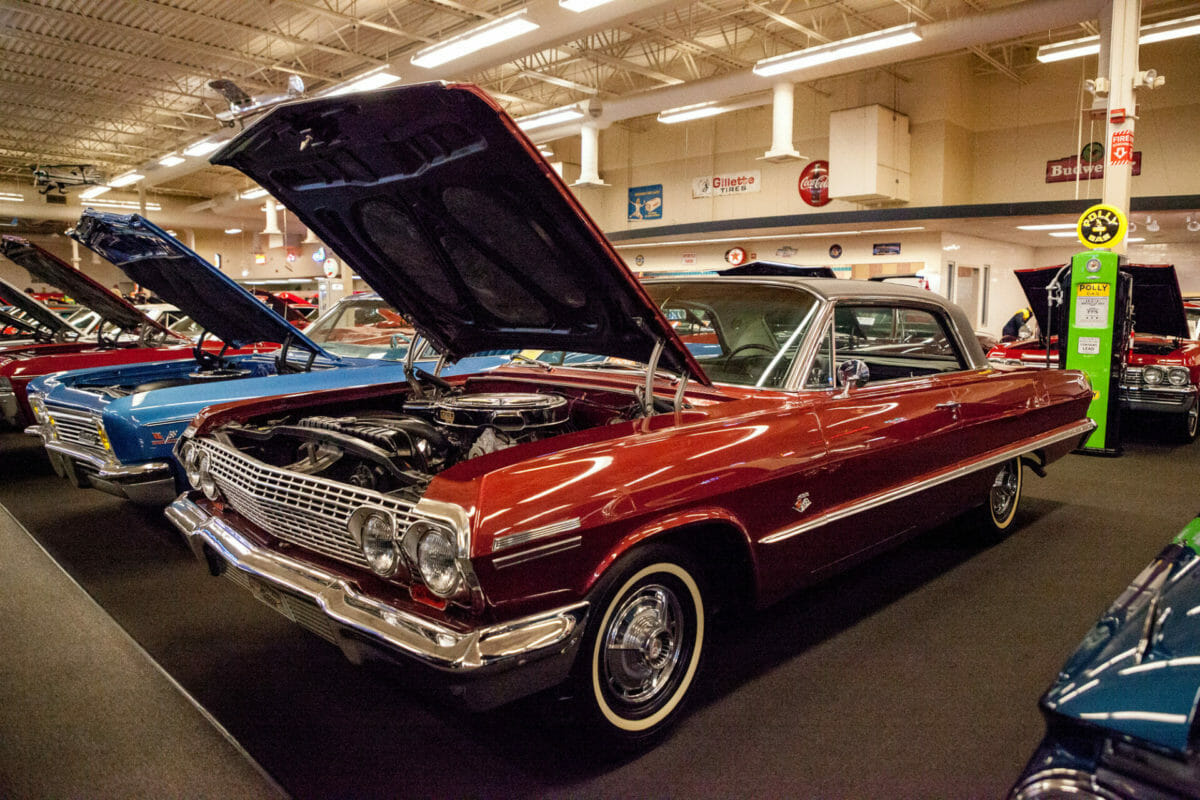
1962-1963: Chevrolet’s New V8 Debuts
In 1962, the brand-new 327 became an option in Chevrolet’s trucks and full-size cars such as the C10, Biscayne, Bel Air, Impala, and Corvette. It was not yet available in smaller cars like the Corvair or the Chevy II.
In 1962 and 1963, the 327 was available with four power ratings. The lowest rated 327 made 250 hp at 4,400 rpm and 350 lb.-ft. of torque at 2,800 rpm. The next level of the 327 produced 300 hp at 5,000 rpm and 360 lb.-ft. at 3,200 rpm.
The 250 and 300 horsepower 327s were considered mid-trim options in Chevy’s full-size cars, while big-block V8s (the 348 and 409 W-motors) were advertised as the top-trim options.
Performance-minded buyers noticed the 327 produced nearly as much horsepower as the big blocks but weighed 100 pounds less. The new small block earned the nickname “Mighty Mouse” among hot-rodders.
The 327’s popularity led General Motors to eventually cancel the 348 big-block.
The top two levels of the 327 were only available in the Corvette. Both engines had a high compression ratio (11.01:1) and GM’s famous solid-lifter “Duntov” camshaft.
These Corvette power plants were fed by either a four-barrel Carter AFB carburetor that enabled 340 hp at 6,000 rpm with 344 lb.-ft. of torque at 4,000 rpm, or a state-of-the-art Rochester Ram-Jet mechanical fuel-injection system capable of turning out 360 hp at 6,000 rpm with 352 lb.-ft. at 4,000 rpm.
At the time, precious few engines produced one horsepower for every cubic inch of displacement. The two top-level 327s were both feats of engineering. In 1963, the carbureted, 340 hp 327 was given a Chevrolet “regular production option” (RPO) code of L76, and its fuel-injected brother dubbed the L84.
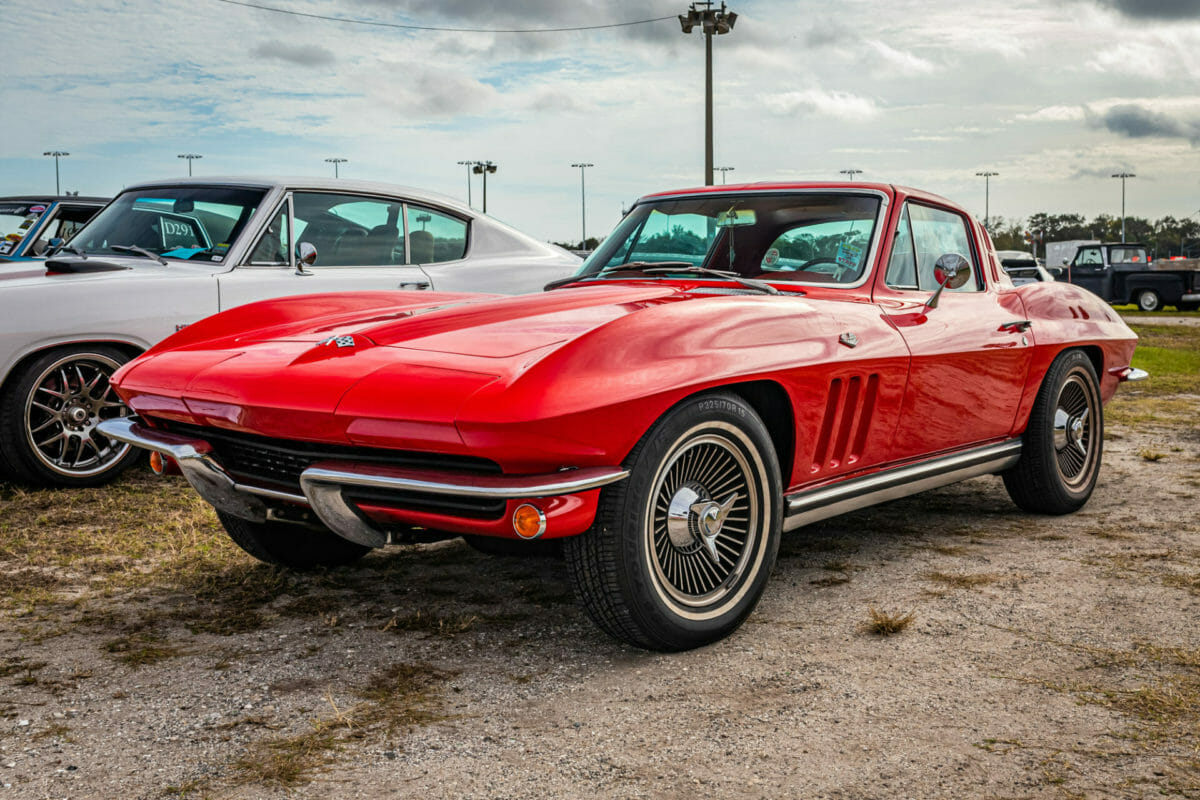
1964: Corvette 327 Breaks Records
The year 1964 would prove to be the 327’s greatest and final year as GM’s top-performance power plant. Chevrolet racing engineers pioneered an aggressive new camshaft.
Once outfitted with the new camshaft, the 327’s suggested intake and exhaust valve lash settings were a 30-thousandth of an inch (0.03-inches)—and thus, owners nicknamed it the “30-30” cam.
The other specifications of the 30-30 camshaft—such as degrees of duration and inches of lift—remained closely guarded secrets. 327 V8s outfitted with the 30-30 camshaft retained their old engine codes but boasted higher horsepower ratings.
The 1964 L76 cranked out 365 hp at 6,200 rpm and 350 lb.-ft. at 4,000 rpm. The 1964 fuel-injected L84 set records with 375 hp at 6,200 rpm and 350 lb.-ft. at 4,600 rpm.
No Chevrolet small-block V8 before the L84 had claimed 375 gross horsepower. The L84 would keep this record for generation after generation of V8s, finally being dethroned by the debut of Chevy’s 5.7-liter LS6 V8 in 2001.
By the mid-1960s, General Motors decided big-block V8s producing big power were the future of the horsepower wars.
GM canceled the L84 327 and re-engineered the Corvette to carry a big-block engine as its high-performance option. But the company brass would be proven wrong, and the mighty 327 would get a new lease on life, driving the pony car stampede.
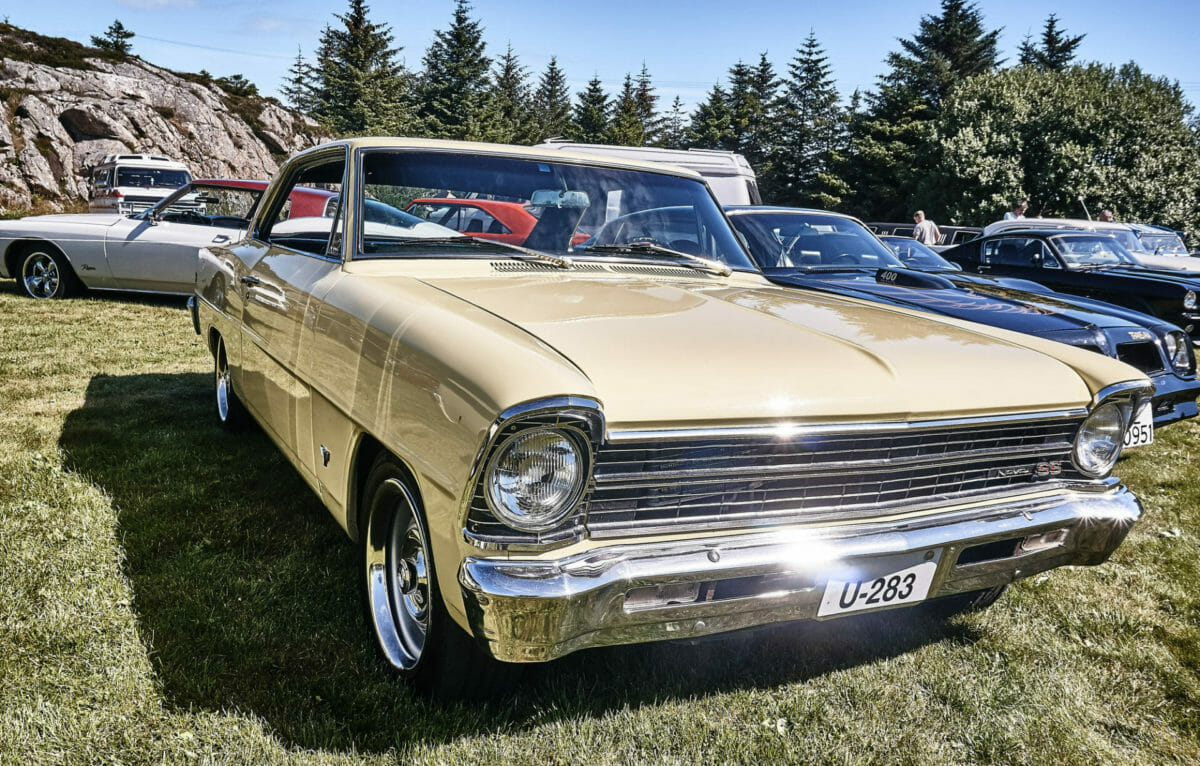
1965-1966: Chevelle and Nova Get 327s
By 1965, Chevrolet had a major problem: the Ford Mustang. Blue Oval designers had re-bodied the nimble Ford Falcon as a cutting-edge fastback.
Then the Ford Motor Company engineers had fit a series of powerful small-block V8s into the car. The resulting vehicle was fast, sexy, and cheap. The Mustang won over American youth; after a mid-year launch, Ford sold an unprecedented 400,000 cars in 1964.
With the Mustang’s success, the pony car wars were off to a gallop. Chevrolet tried desperately to make the Bowtie competitive in this wide-open market segment. The company knew its answer to the Mustang must be powered by a lightweight V8.
For 1965, Chevy engineers created a new 327 V8—the L79. Their goal was a powerful but hassle-free V8.
The L79 avoided the need for periodic valve lash adjustments by opting for a less efficient hydraulic roller cam. Despite this trade-off, the V8 produced 350 hp at 5,800 rpm and 360 lb.-ft. of torque at 3,600 rpm.
For 1966, Chevy focused its small-block development resources on updating its two low-trim 327 V8s: The resulting entry-level V8 produced 275 hp at 4,800 rpm and 355 lb.-ft. of torque at 2,800 rpm. The next level of 327 V8 was rated for 300 hp at 5,000 rpm and 360 lb.-ft. at 3,200 rpm.
Because GM could not fit a small-block V8 into its rear-engine Corvair and related Z-body cars, it pivoted back to small, front-engine, rear-wheel-drive sports cars. In mid-1964, GM updated its Chevelle SS to offer the two-door car with either the 250 hp or 300 hp 327.
By 1965, customers could order the Chevelle Malibu SS with the cutting-edge, 350 hp L79 V8. But the Chevelle had been engineered as a “senior compact:” the 3,256-pound car with its 115-inch wheelbase could not hang with the nimble Mustang.
In 1965, GM began to offer its tiny Chevy II Nova with the 300 hp 327, endowing the previously budget-friendly chassis with muscle car power. But, the Chevy II Nova’s sales slumped anyway.
Nothing in Chevrolet’s lineup could catch the Mustang, so the company engineering a brand-new car to carry their brand-new L79: The Camaro.
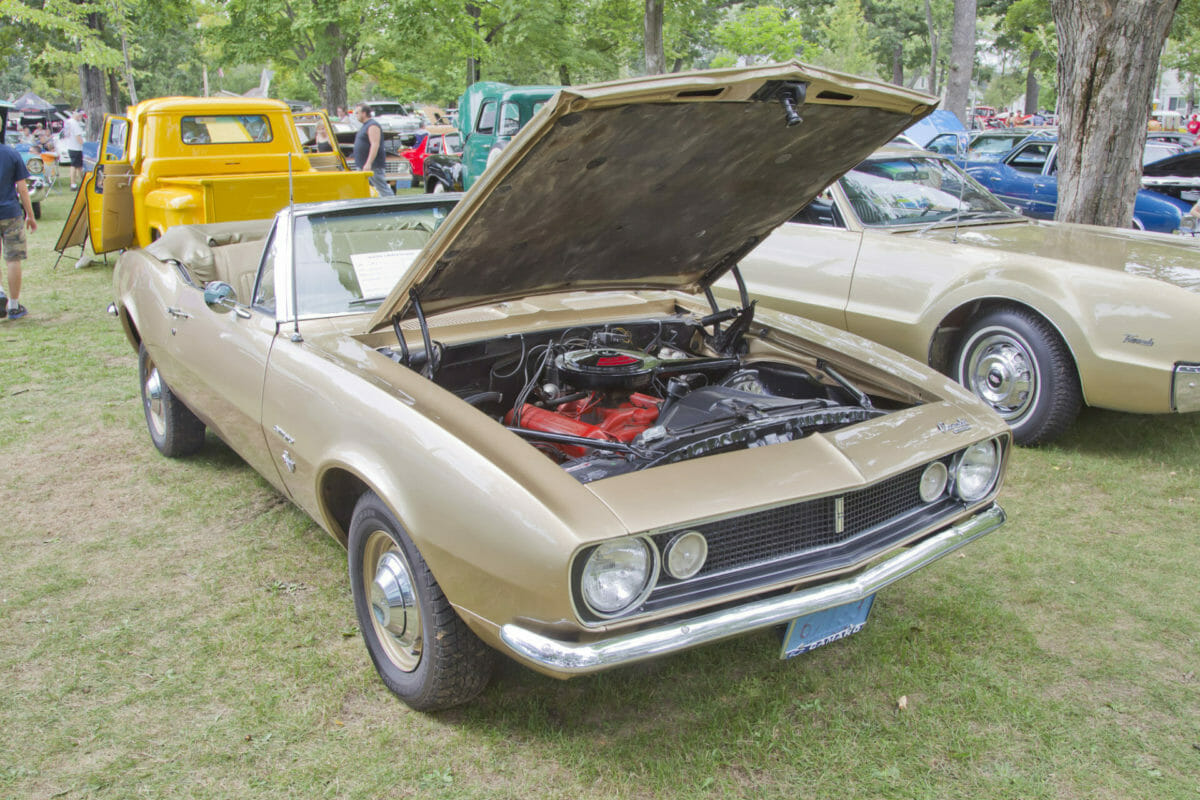
1967-1968: The Camaro Launches
By 1967, small-block V8s were replacing inline six-cylinders in many base-level Chevrolet vehicles. The company added a budget-friendly 327 to its lineup.
The new engine was outfitted with a two-barrel carburetor and a lower compression ratio of 8.75:1. This 327 only produced 210 hp at 4,600 rpm and 320 lb.-ft. of torque at 2,400 rpm. It was the first 327 ever sold with a two-barrel carburetor.
The four 1967 327s outfitted with four-barrel carburetors were rated at 275 hp, 300 hp, 325 hp, and finally, the L79 retained its rating of 350 hp. For the 1968 year, Chevy’s small-block engines were all upgraded with larger, 2.45-inch main journal bearings. 1968 and later Chevy small-blocks are sometimes referred to as “medium-journal engines.”
For 1967, Chevrolet built an exciting pony car on the Chevy II Nova’s chassis: the stylish Camaro. Chevy sought to flood the pony car market with an unprecedented number of engine, transmission, and option packages. 1967 Camaros ranged from 140 hp, six-cylinder-powered budget cars to fully optioned, Z28-badged racecars. The strategy was a success: Chevrolet sold 220,906 Camaros in 1967.
Chevrolet offered its 1967 Camaro with a Super Sport (SS) package. Many SS Camaros shipped with big-block engines. But GM tasked its engineers with designing a new, high-performance 327 small-block V8 as the base engine for the 1967 Camaro SS.
The new Camaro-only small-block was initially named the L48. For years, hot-rodders had been increasing the stroke of their 327 V8s. GM engineers experimented with a longer (3.48-inch) stroke and found the resulting small-block boasted more torque than the 327.
Chevy named the 349.85 ci (5.7L) V8 the “350.” For 1968, Chevy also offered the 350 in the Nova, and by 1969 the new V8 became the small block of choice across Chevy’s entire lineup.
1969: Budget-friendly 327s
For the 1969 model year, Chevrolet built two final versions of the 327, both fuel-efficient friendly engines with two-barrel carburetors and compression ratios of 9:1. The 210 hp 327 retained all its 1967-68 ratings. A new two-barrel 327 made 235 hp at 4,800 rpm and 325 lb.-ft. of torque at 2,600 rpm.
Photos: Deposit Photos